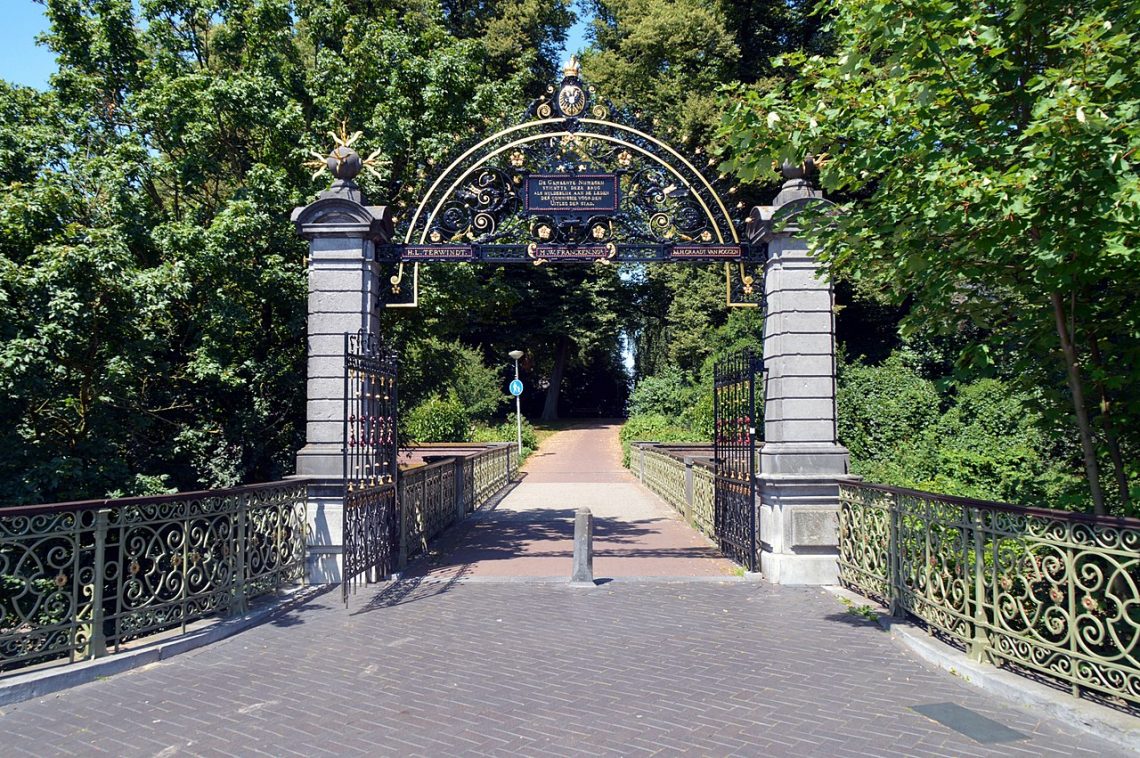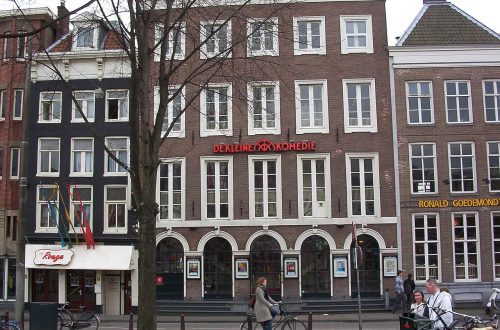
Visiting landscapes inside and out (Nijmegen, Netherlands)
During the start of COVID-19, the Valkhof museum has not been idle. During the first two months of the pandemic, Valkhof committed itself to continue to stimulate the visitors as a museum. They did this by creating the Binnenste Buitenland exhibition. With the help of a hidden collection of the museum, one is taken back in time to the landscapes and thus the source of inspiration for 19th-century artists. The creation of the exhibition did not go smoothly, nevertheless, the museum has achieved its greatest goal; to keep visitors active and connect them with the museum and Nijmegen
Background
The Valkhof Museum is located nearby the Valkhof Park in the centre of Nijmegen. It is located next to a remnant of the old city wall. The museum brings together the collections of two former museums: the collections of ancient and modern art of the Nijmeegs Museum ‘Commanderie van Sint Jan’ and the archaeological collections of the Provincial Museum G.M. Kam. The archaeological collection consists of recent excavations in Gelderland. Almost all of the archaeological excavations are found in Nijmegen and Gelderland. The most important collection of the museum is the findings from the times of the Romans (Collectie Gelderland).
The museum wants to show its collections and tell the story of more than 5000 years of history but the museum also wants to connect the visitors with the past and give them an unforgettable experience. The mission of the museum is to share knowledge about history, heritage and art to inspire and inform their visitors and to stimulate their imagination and fantasy with the aim of increasing their creativity and creative possibilities. The target group of the museum is seniors between the ages of 50 and 60 but the museum is also collaborating with schools and universities to attract more younger people during school trips.
The organization structure has three different departments. The museum has a facilities department, a collections department, and a public and presentation department. There is also an extra-provincial depot department. All the departments have a representative who is on the management team together with a general director. The museum has two important collaborators, these are subsidy providers of the municipality and the province. Recently, the municipality has become the owner of the museum’s property and that is why the municipality is an increasingly important stakeholder.
Description
The Binnenste Buitenland (translating as ‘inside outside’) exhibition is interesting as well as active. The exhibition is a combination of a visit to the museum and a nature walk in the area, which was the inspiration for many nineteenth-century artists. The ‘Binnenste Buitenland’ exhibition shows how these artists portrayed the typical polder area and its striking differences in height. The exhibition makes you experience the landscape through the eyes of the artists.
The purpose of the exhibition was to present the museum’s collection. The museum has many works of art from the region that have never seen the light of day. The COVID-19-pandemic was a great time to showcase these collections and keep people active in a different way. Although the museum could not be visited at this time, a connection could still be made between people, the museum and the collection by creating an exhibition with the focus being inside in the outside area nearby the Valkhof Museum.
The mastermind behind the exhibition is Odette Straten. Since the exhibition was put together on a small scale, in a relatively short period of time, there was no project team involved. The exhibition was put together with the help of internal and external manpower, in addition to the leadership of Ms Straten. The placing of the collections and the marketing of the exhibition was done by internal colleagues. External help was also sought out for the exhibition design and the graphic design for the walking tour.
The COVID-19-pandemic had a major impact on the success of the exhibition. Binnenste Buitenland was put together in two months. The exhibition was created by brainstorming and finding out what makes Nijmegen special (the hilly landscapes and nature). By responding to contemporary developments and being innovative, the exhibition has achieved its goal and has attracted the desired audience. With this, the museum has shown that they are in constant movement and are still trying to mean something to the target group.
After the success of the exhibition, the museum has decided to continue with an online format. This was put together by a colleague of Ms Straten.
Impact
Research was carried out on the impact of the exhibition on the organization and its target groups, as well as its general societal impact. Unfortunately, it has proven difficult to measure whether the goal of the number of visitors has been achieved. This is difficult because the Valkhof museum has not kept track of how many visitors actually came for the exhibition and what the profile of these visitors was.
The compilation and implementation of the exhibition has made it possible for the Valkhof museum to cooperate more consciously with the various departments of the organization so that they do not go across each other. For example, during the setting up of the exhibition, there was a misunderstanding the curator and the department that deals with the collections. As a result of this miscommunication, too much light shone on certain pieces. This can have major disadvantageous consequences for the affected art pieces. In order to realize the exhibition, Ms Straten has often collaborated with internal branches of the organization and already known partners such as the municipality. However, preference is given to working in project groups.
It is difficult for the Valkhof museum to monitor whether people visited the museum due to the exhibition or not. It is also highly possible that people have stumbled onto the exhibition by chance while visiting the museum. Therefore, it’s not entirely clear whether the actual visitor of the exhibition differs from the regular group that visits the museum and what the reason is for the visit to the exhibition. The museum especially hopes that by visiting the exhibition people will realize that the museum is not only about the collection, but that it can also be combined with a walk in the lush outside environment of the museum.
During the creation of Binnenste Buitenland, social issues were not specifically considered. It can be difficult for visitors who are blind, deaf or have bad mobility to visit and participate. The senior group, however, has been kept in mind. Maps have been printed out for the sake of their convenience. In this way, you don’t have to have your smartphone out continuously while enjoying the walk. During the exhibition, sustainability has not been taken into account. The branding and marketing of the exhibition have mainly been done on social media, in local newspapers and on hiking sites.
Interpretation
The short term production of a new exhibition has strengthened the collaboration between departments resulting in an increase in understanding between them and a shift towards a preference for interdisciplinary project work. The linking of the inside of the museum with its surrounding landscape has opened up new opportunities, and adds value to the collection of landscapes the museum had in its depot. On the down side, the open air access of this activity has resulted in a lack of data on its visitor numbers and profile which is an important lesson learned.
References
- Collectie Gelderland. “Organisaties: Museum Het Valkhof” Collectie Gelderland. https://www.collectiegelderland.nl/organisaties/museumhetvalkhof (accessed October 18, 2021).
- Odette Straten, interview by Laila Aït Bassou, Lee-andro Cloteda & Oumaima Ahabad, Diemen (online, see interview recording in attachment), 15 October 2021.
Auteur
- Laila Aït Bassou / Lee-andro Cloteda / Oumaima Ahabad / Charlotte Beukers (Inholland University of Applied Sciences)




